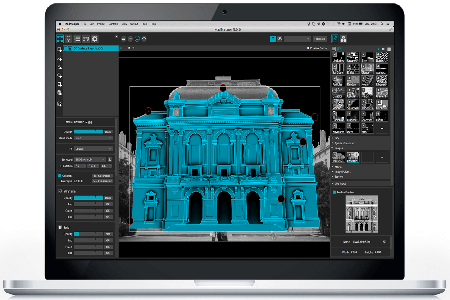

Here comes the MAD_Lab, a laboratory for experimental softwares. So you like MadMapper, but want more features ? – Spacial Scanner to turn your video-projector into a 2d scanner (check your camera compatibility here)

– Direct access to Quartz Composer published inputs, and an interactive mode – Display of Images, Quartz Composer compositions, Quicktime movies or Syphon inputs – Master opacity to blackout the whole projection – Opacity and Blending modes for each element – Grid Warping (up to 30 by 30 subdivisions) – MAD_Light (LED Mapper) to address individual light pixels – DMX fixture surface to control lighting equipments – Quads, triangles, circles and masks elements These surfaces can then be transformed and arranged as desired within the video canvas called “the stage.” These extracted elements are called “surfaces” that consist of multiple geometric primitives, such as a quad, a triangle or a grid. The approach that one should assume with MadMapper is that it is extracting elements from a source, generally referred to as “the input.” This “input” can be any material you import into MadMapper, such as an image, QuickTime movie or Syphon input. There is an ever-growing list of software supporting the Syphon framework, such as:

MadMapper also allows to manipulate lighting fixtures (such as LEDs) using MAD_Light, To accomplish this task, MadMapper uses a Mac OS X based framework called Syphon.Īny application that can send its output the Syphon server, the video is automatically available to MadMapper for perspective transformations and warping. MadMapper is built around the idea of sharing video content between applications. It removes a lot of the confusion related to this medium, effectively demystifying the process, allowing you, the artist or designer to focus on creating your content, and making the experience of mapping textures to physical objects in real time, fun. The MadMapper provides a simple and easy tool for video-mapping projections and LED mapping. The basic idea: take a projector, point it at a physical volume like an object or an architectural element, and then map an image onto it. As of this writing projection mapping is one of the fastest growing mediums, being used in a variety of artistic and commercial projects.


 0 kommentar(er)
0 kommentar(er)
